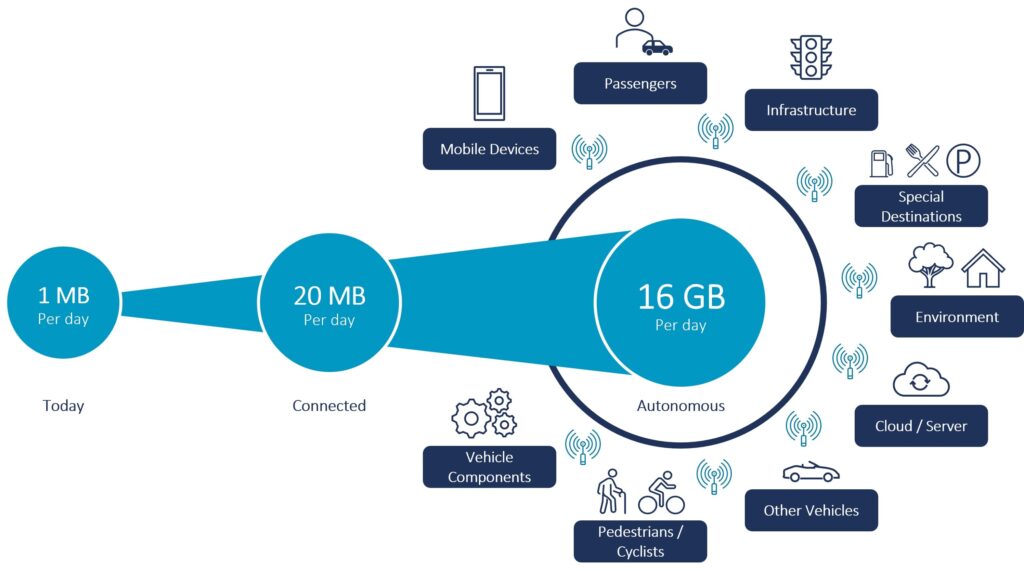
AI-Driven Application & Process Testing: Embracing Agentic Testing
Learn how Agentic AI enables digital transformation, delivering true hyperautomation.
The megatrend of new mobility is shaping the future in many ways. The COVID-19 pandemic has shown us the importance of mobility by forcing us to shut down. These changes go beyond individual transportation and have an impact on the economy, society, and urban planning.
Mobility is no longer just a means of getting from A to B; it reflects a mobile world culture. The car is losing its status as a symbol of prestige and becoming part of a seamless mobility system that is post-fossil, connected, and increasingly autonomous. Cities are responding to these changes by reducing roads and parking for cars to make room for bike lanes, sidewalks, and public transit. The Road Diet movement is gaining momentum and is transforming traffic spaces into opportunity spaces for mobility, increasing the quality of life in urban areas.
These are just a couple of changes that society is facing when looking into the face of new mobility. However, they have one thing in common: effective data management plays a crucial role in facilitating these transformations and ensuring their success. In this blog post, we explain the importance of data management for new mobility and give a glimpse of what we at Camelot have planned to pay our dues to support this transformation.
Let’s first dive into the concept of new mobility and its different aspects. As mentioned in the introduction, it is causing a shift beyond getting to work in the morning but rather transforming into a structure of how society defines itself. Everyone is familiar with some of the trends around New Mobility, such as autonomous driving and car sharing. However, new mobility also means developing strategies to create safe streets for everyone, reducing traffic congestion and limiting emissions, especially in urban areas.
Integrating transportation modes and activities leads to shared streets and slow travel, enhancing the quality of urban living. Autonomous vehicles are changing the way we get around and could reduce the need for parking spaces.
Seamless mobility integrates various transportation services into digital offerings, enabling smooth and effortless trip planning and booking. Access to mobility is becoming more important than vehicle ownership, leading to a wide range of mobility offerings and experiences.
This is only possible by utilizing data. Nowadays almost every instance in the modern city generates data, such as the car with 100 sensors, the traffic light with cameras, and the pedestrians and cyclists with their cellphones. We are moving towards a data volume of 20 megabytes per day, with the potential to increase to 16 gigabytes in the future. That is a lot of data, especially considering that it needs to be managed holistically to realize its full potential.

Data is powerful, but only if it is managed properly and utilized effectively to generate knowledge. Especially when looking at new mobility, this is not as straightforward, since we are looking at a diverse data set generated by millions of parties, from private people to public entities and corporations. So, there are a couple of specialties and tweaks to be kept in mind.
Firstly, as mentioned before, numerous modes of transportation result in increasingly diverse data sources, requiring holistic integration to show a seamless picture. Single data sets from just one entity or even just one transportation mode, e. g. public buses, will not provide a full picture and will not enable quick and well-based decisions.
Furthermore, in the mobility sector, real-time data, e. g. from GPS, plays an important role in monitoring traffic, making real-time decisions, and optimizing traffic. Situations can change in split seconds and proper data management needs to consider this to generate proper intelligence and achieve the intended goals.
An essential consideration in the context of data originating from various sources, including individuals, is that data within the mobility sector frequently includes personal details. Therefore, safeguarding data and ensuring its security becomes a critical concern. It is crucial to prevent personal information from ending up in unauthorized hands. Moreover, various transportation modes within the mobility sector frequently utilize distinct data formats and standards. As a result, achieving interoperability is essential to enable holistic integration and analysis and thus a complete picture for informed, data-driven decisions.
Lastly, the large amounts of data, e. g. from real-time data, and the many different data sources need to be considered. To address these challenges, it is necessary to consider scalable data management solutions to ensure the efficient processing of data and the seamless extraction of valuable insights from high-quality data.
Data Management in itself is not a one-size-fits-all approach. There are a couple of things to consider, particularly in the case of integrated data networks of data, as found in many new mobility use cases. Effective data management plays a significant role in leveraging the potential. However, to achieve this, rethinking data management practices is crucial. Interoperability between different stakeholders and data sources, especially for data platforms in the mobility sector, as well as scalability for growing stakeholder groups and amounts of data, need to be warranted.
One approach to handle this problem is the development of a holistic data governance and strategy framework that can be applied to these sorts of platforms. A holistic approach guarantees the inclusion of different stakeholder groups and also ensures the adaptability to increasing data volumes. This only makes sense as data governance should always be developed in the context of the organization. A mobility platform economy uniting multiple stakeholders and data sources can and should be treated like an organization in this case, considering the different perspectives and objectives in the respective context.
Therefore, creating a strong organizational and cultural data-driven foundation across key stakeholders to ensure working toward a common goal is essential to transforming mobility through data management.
Furthermore, all relevant stakeholders, such as transportation companies, platform operators, and especially public entities like cities and city planning offices, must be able to process the data, interpret it, and make informed decisions based on the data. Developing fundamental data literacy and implementing the requisite data infrastructure and procedures are vital for facilitating the transition to new mobility.
Will there be self-driving cars or flying trains – no one can tell for sure. What is for sure, however, is that mobility is going to change and adjust to the challenges and opportunities of our time. Data Management is going to play a key role in enabling this transition, not only in the sense of properly integrating and utilizing data but also by enabling stakeholders and key players to become data-driven in the first place. They need to understand the challenges and tweaks of data management for mobility use cases and be prepared to make informed decisions based on the data available and develop use cases that will further accelerate the new mobility transition.
New mobility is not going to disappear, it’s a movement we all should embrace and support. We at Camelot are working on multiple approaches aimed at companies facing the challenge of becoming data-driven in the context of new mobility.

Learn how Agentic AI enables digital transformation, delivering true hyperautomation.

Reimagine resilience and proactively minimize supply chain risks

This article shall help you to understand how to optimize your inventory positions in a month – or even less.

Modern PLM systems empower businesses to achieve product excellence in fast-paced markets by enhancing collaboration, agility and innovation.
© Camelot Management Consultants, Part of Accenture
Camelot Management Consultants is the brand name through which the member firms Camelot Management Consultants GmbH, Camelot ITLab GmbH and their local subsidiaries operate and deliver their services.